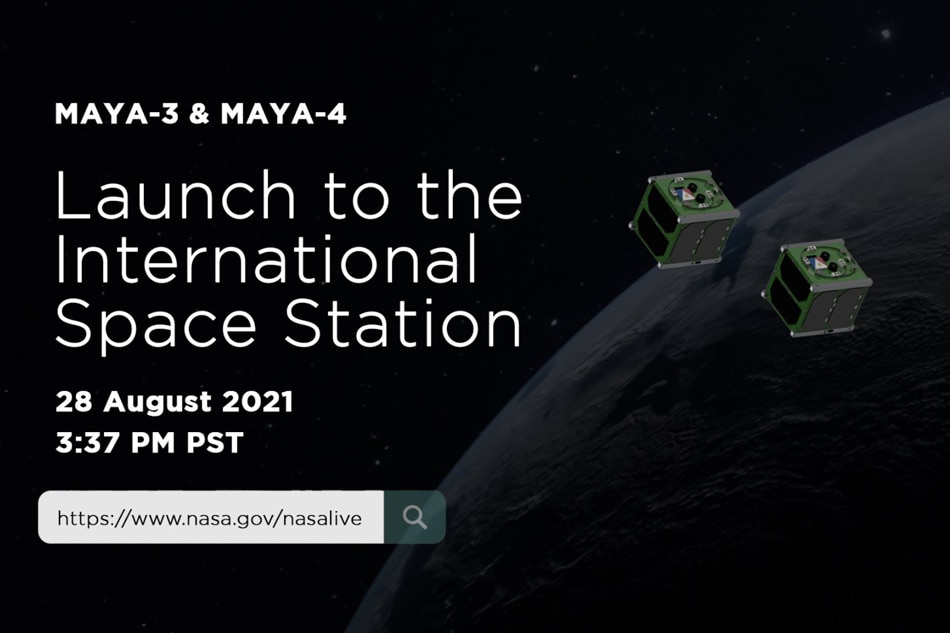
MANILA— Two cube satellites, Maya 3 and Maya 4, will be launched on the International Space Station (ISS) on Saturday afternoon, according to the Department of Science and Technology (DOST).
The DOST said this is the first time that two cube satellites made in the Philippines would be embedded together. The satellites, which will collect ground data, among others, will be launched at 15:37, Manila time.
The launch is part of the U.S. National Aeronautics and Space Administration’s (NASA) SpaceX commercial supply mission to the International Space Station (ISS), according to information from NASA and DOST platforms.
“The CubeSats will leave Earth aboard a SpaceX Falcon 9 Dragon C208 rocket as part of the SpaceX-23 Commercial Supply Mission (SpX-23),” the science department said in a post on Facebook.
Supply services are part of the “scientific and technological demonstrations” that were intended to help the experiments aboard the ISS, according to a separate explanation from NASA.
“The experiments on board include research on the protection of bone health with botanical by-products, testing of a way to control the eye health of the crew, demonstrating better dexterity of robots, exposing building materials to the difficult environment of space, mitigating plant stress and more, ”NASA added.
MAY 3 AND MAY 4
Maya 3 and Maya 4 were developed under the STAMINA4Space program thanks to the support of DOST, Diliman University of the Philippines, Kyushu Institute of Technology, and the Philippine Space Agency.
The missions of the two cube satellites include demonstrating the capture of images and videos from an RGB camera and a nearby infrared camera, as well as exhibiting the acquisition of ground data to collect sensor data. of remote soil such as temperature and humidity.
The satellites are also expected to demonstrate a commercial module of global positioning system (GPS) and measurement of the magnetic field in space, among other things.
Young Filipino scholars helped develop Maya 3 and Maya 4 along with other scholars from other countries.
Maya 1 was released in 2018, while Maya 2 was released earlier this year.
You can register here to book your online ticket for the event and get more information and updates on NASA’s SpX-23 mission, according to DOST.
– Reports by Jekki Pascual and Job Manahan, ABS-CBN News
FROM OUR ARCHIVES
